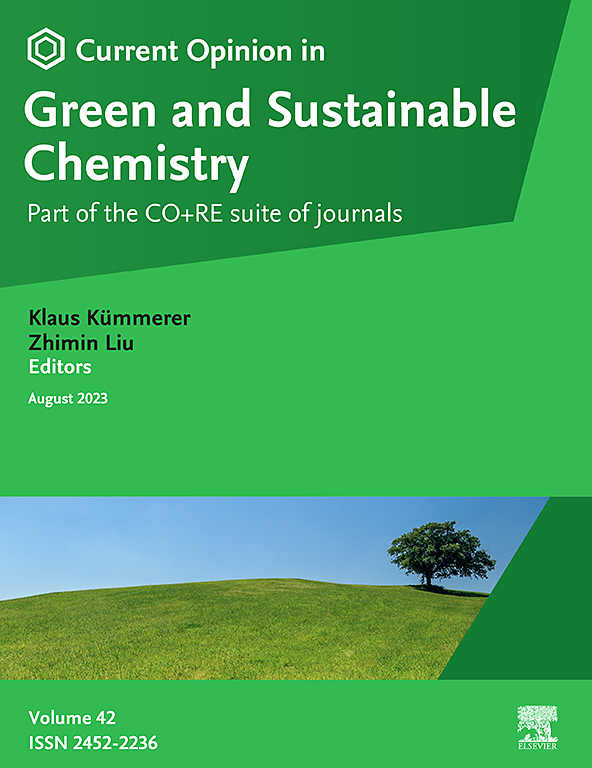Recent developments in sustainable high Tg (co)polyesters from 2,5-furandicarboxylic acid, isosorbide, and oxalic acid. Performance and social perspectives
IF 9.3
2区 化学
Q1 CHEMISTRY, MULTIDISCIPLINARY
Current Opinion in Green and Sustainable Chemistry
Pub Date : 2025-03-01
DOI:10.1016/j.cogsc.2025.101013
引用次数: 0
Abstract
Renewable polyesters with a good balance between impact strength and elastic modulus are rare, especially when combined with a high glass transition temperature (Tg). Meeting such performance would enable the substitution of polymers like acrylonitrile butadiene styrene (ABS) and polycarbonate with chemically recyclable polyesters from bio-based, CO2-based, or recycled sources. Recently, we showed that the low reactivity of isosorbide can be overcome. The synthesized copolyesters are very competitive regarding the goals of Tg, modulus, and impact strength. CO2-based oxalate esters and isosorbide are an intriguing monomer combination. These polyesters offer a combination of outstanding mechanical-, thermal-, and barrier properties in combination with unique home compostability and marine degradability. In this minireview, we will highlight some recent polymer technology developments on high Tg (co)polyesters and we look at the recent behavior of consumers on their willingness to pay for sustainability, which can create a strong market pull that can help to accelerate the plastic materials transition.
2,5-呋喃二甲酸、异山梨酯和草酸合成可持续高Tg (co)聚酯的最新进展。表现和社会观点
在冲击强度和弹性模量之间有良好平衡的可再生聚酯是罕见的,特别是当与高玻璃化转变温度(Tg)结合时。达到这样的性能将使丙烯腈-丁二烯-苯乙烯(ABS)和聚碳酸酯等聚合物能够被生物基、二氧化碳基或可回收来源的化学可回收聚酯取代。最近,我们发现异山梨酯的低反应性是可以克服的。合成的共聚酯在Tg、模量和冲击强度方面具有很强的竞争力。以二氧化碳为基础的草酸酯和异山梨酯是一个有趣的单体组合。这些聚酯提供了杰出的机械、热、屏障性能,结合独特的家庭堆肥性和海洋降解性。在这篇小型综述中,我们将重点介绍高Tg (co)聚酯的一些最新聚合物技术发展,并研究最近消费者愿意为可持续性付费的行为,这可以创造一个强大的市场拉动,有助于加速塑料材料的转型。
本文章由计算机程序翻译,如有差异,请以英文原文为准。
求助全文
约1分钟内获得全文
求助全文
来源期刊

Current Opinion in Green and Sustainable Chemistry
Chemical Engineering-Catalysis
CiteScore
16.00
自引率
2.20%
发文量
140
审稿时长
103 days
期刊介绍:
The Current Opinion journals address the challenge specialists face in keeping up with the expanding information in their fields. In Current Opinion in Green and Sustainable Chemistry, experts present views on recent advances in a clear and readable form. The journal also provides evaluations of the most noteworthy papers, annotated by experts, from the extensive pool of original publications in Green and Sustainable Chemistry.
 求助内容:
求助内容: 应助结果提醒方式:
应助结果提醒方式:


